.
17.03.2016
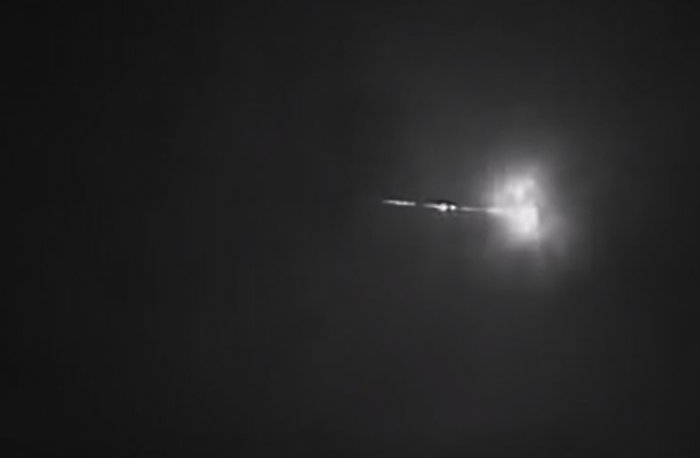
AMS Event #1027-2016 caught on tape by the United Knigdom Meteor Obsevation Network
The AMS received over 19 reports so far about a fireball event over UK (England) on Thursday, March 17th 2016 at 3:16 GMT. The fireball was seen primarily from England but witnesses from France and the Netherlands also reported the event. We expect more reports today.
If you witnessed this event please fill an official fireball report.
Below is the map of the first witnesses location and the first estimation of the ground trajectory:

Video-Frams:
.
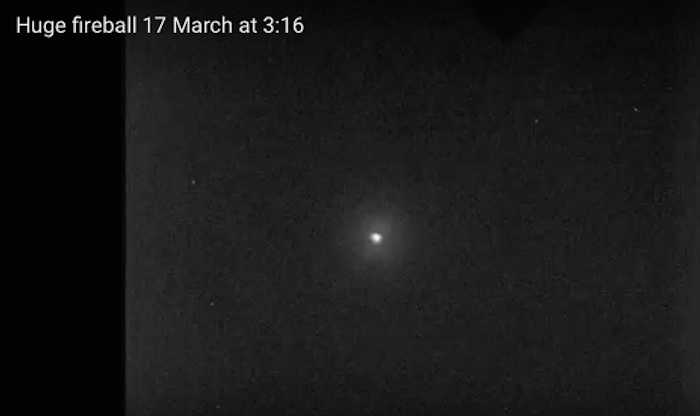
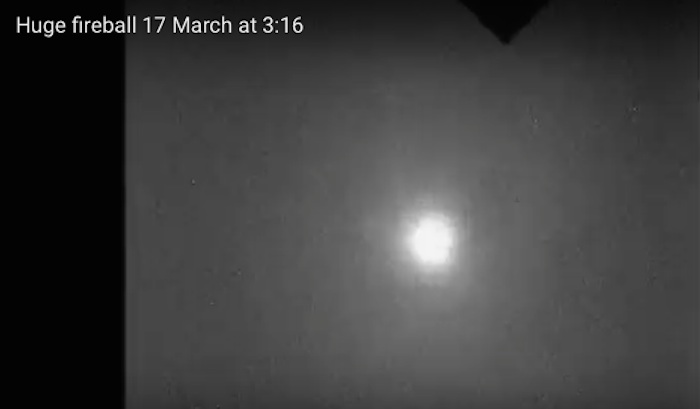
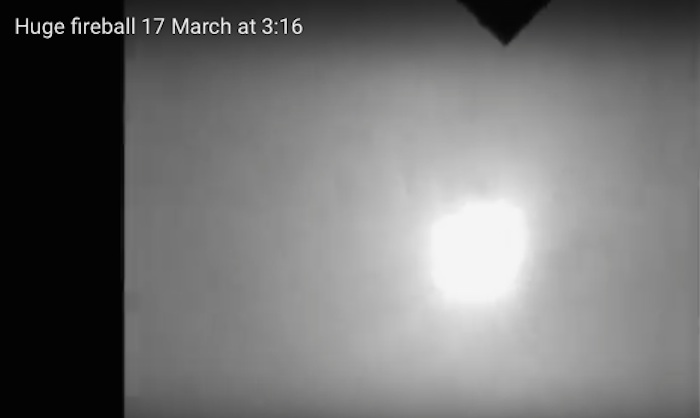
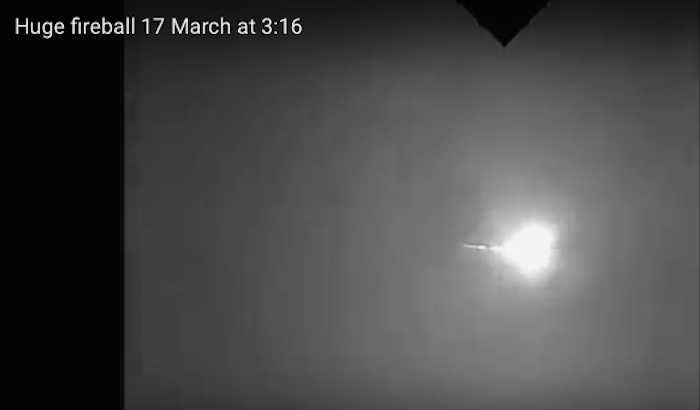
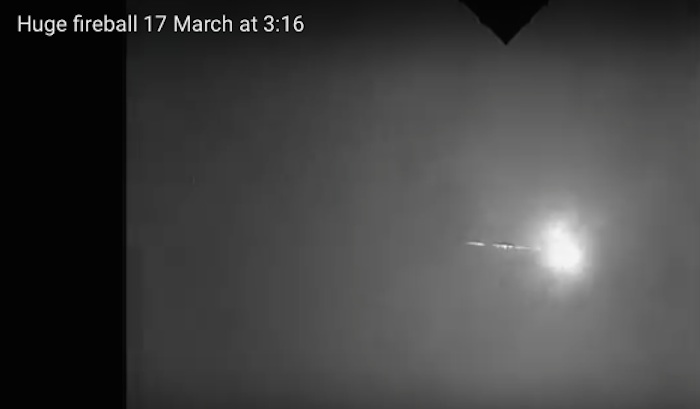

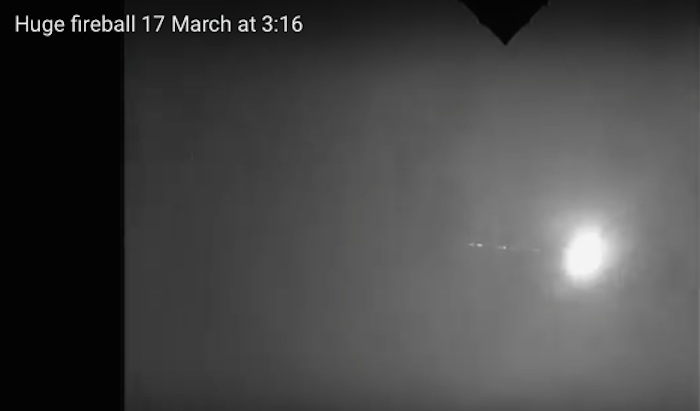
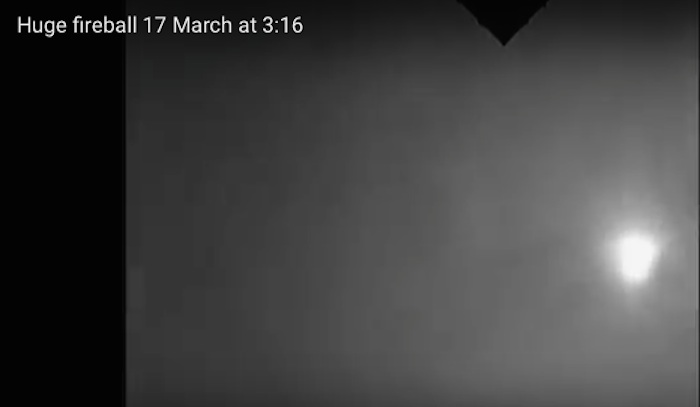
Quelle: AMS
-
Update: 18.03.2016
.
'Green flash' meteor sighting reports across Britain
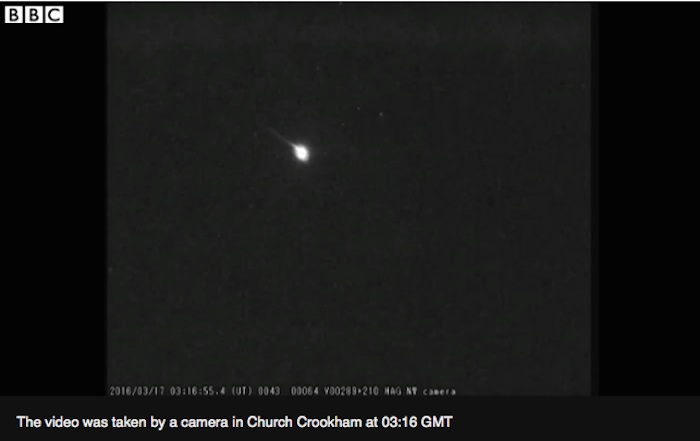
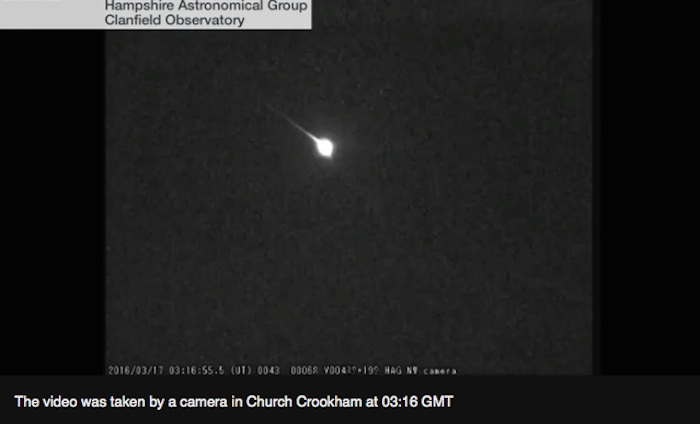


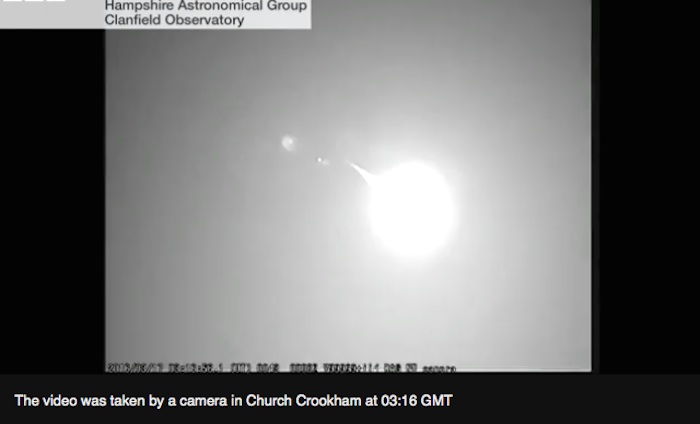
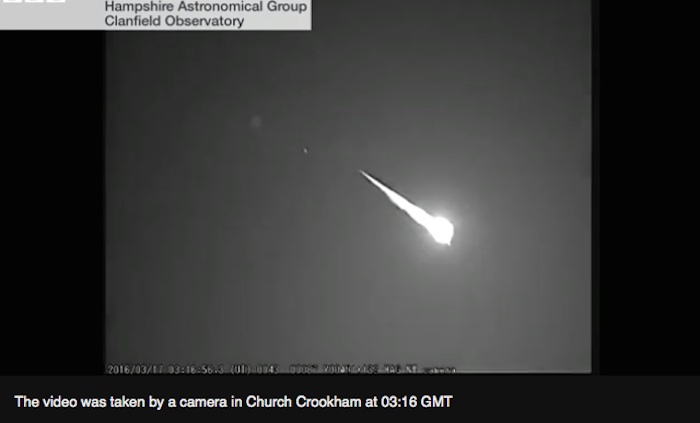
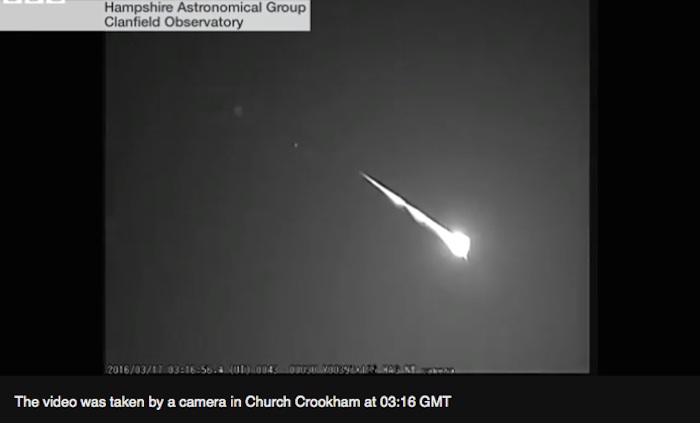
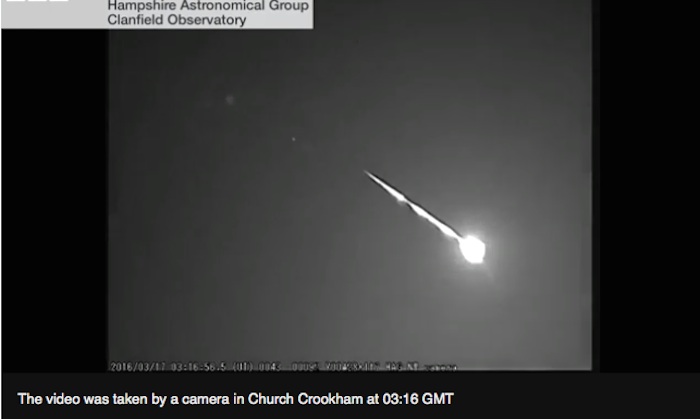
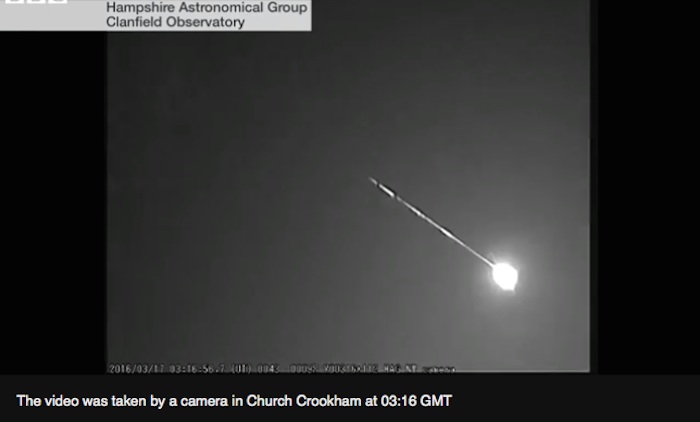
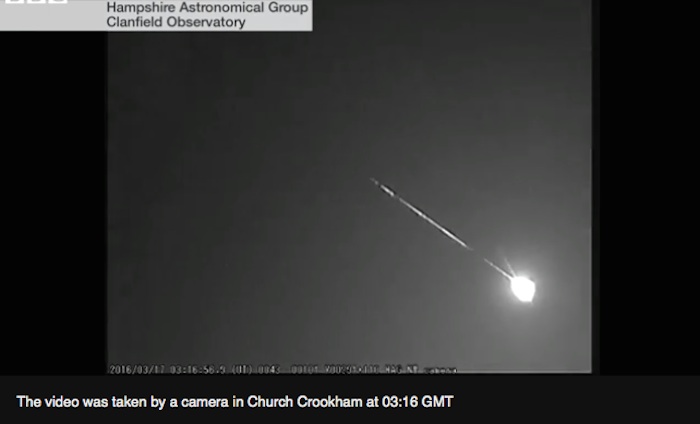

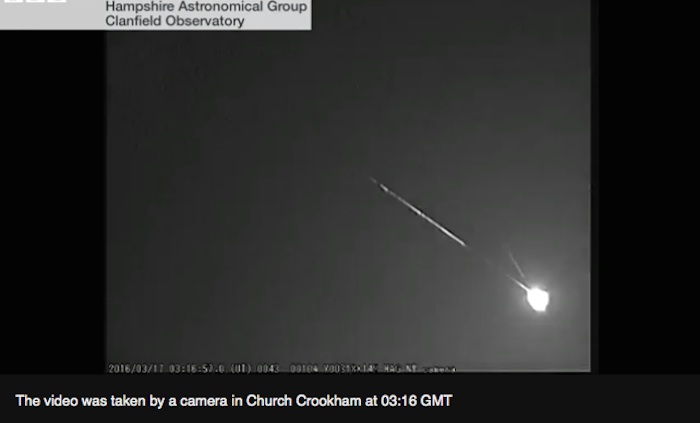
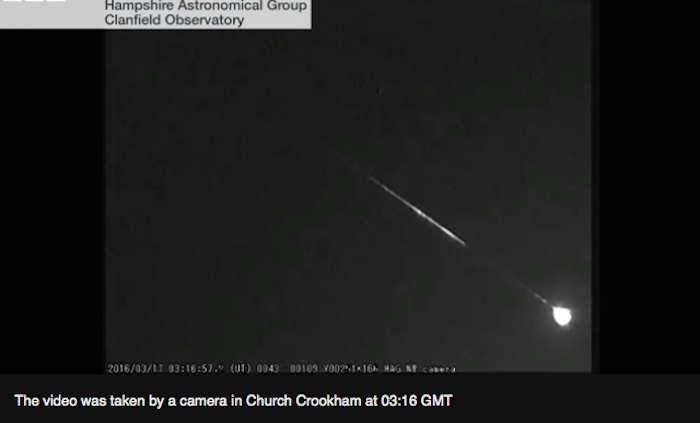
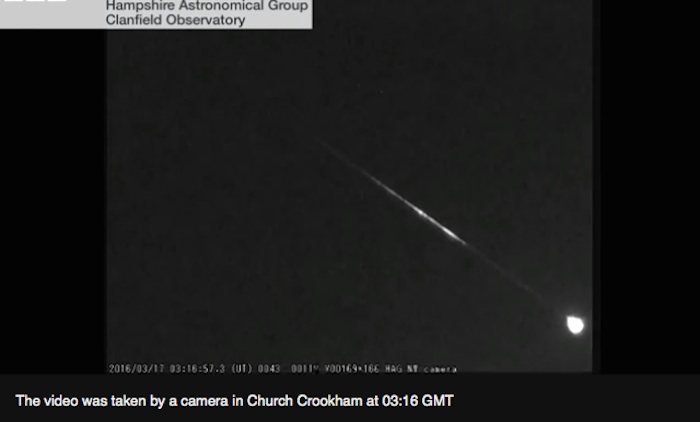
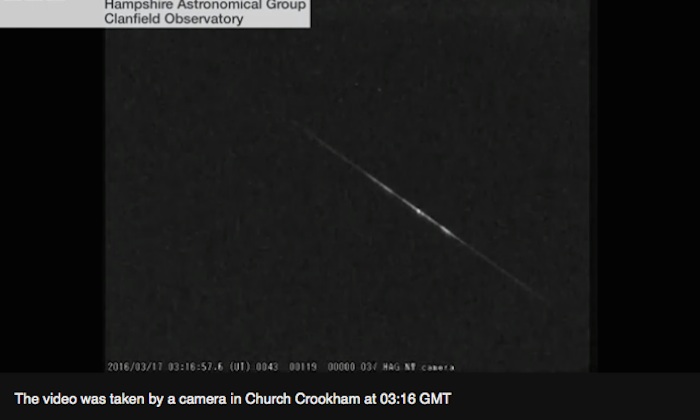
A bright meteor has been sighted over Britain in the early hours.
Witnesses have described the object as a green flash moving south to north for a few seconds, leaving a magnesium-white trail.
Sightings have been reported in locations including London, Hampshire, Stafford and on the east coast of England at 03:16 GMT.
Its colour has prompted people on Twitter to describe it as the St Patrick's Day meteor.
'Not uncommon'
Describing the meteor as "spectacular", Dr John Mason of the British Astronomical Association said it was bright enough to be categorised as a fireball.
He believes it was a piece of cosmic rock which almost certainly came from the asteroid belt between Mars and Jupiter.
He said the green colour was caused by the meteor heating up the oxygen in the earth's atmosphere.
"Meteors of this kind are not uncommon," he added, saying he estimated there was at least one a week over the UK.
.
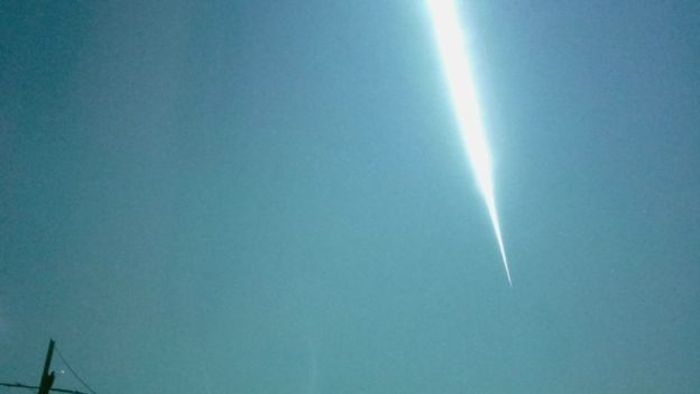
Richard Kacerek, from the UK Meteor Observation Network, told the BBC it had received reports from across the country.
He said the network's camera at Church Crookham in Hampshire had captured the meteor from the west.
"This is the biggest meteor sighting we have recorded," Mr Kacerek said.
"It lasted for a few seconds. It was seen for hundreds of miles. We have received a number of emails."
He said the network of astronomy enthusiasts recorded about 10 to 15 meteors every year.
An astronomer at the Institute of Cosmology and Gravitation at the University of Portsmouth, Dr Karen Masters, said thousands of these objects hit the Earth every day.
She said: "Most of them over the oceans or over uninhabited parts of the world. It is quite rare that one goes over such a populated place and be so bright."
She said the size of this meteor would depend on its velocity but it was probably as big as a tennis ball.
Meteors
Meteors are small rocks or particles of debris, mostly no larger than a grain of sand, which burn up as they enter Earth's atmosphere at high speed
On entering the atmosphere, these particles heat the air around them, causing the light which can be seen from the ground
To be called a fireball the meteor has to appear brighter than the planet Venus
Meteors can be travelling through the atmosphere at speeds between 8 and 40 miles per second
If a meteor survives the passage through the atmosphere and impacts with the Earth's surface, it is then called a meteorite
Source: British Astronomical Association
Quelle: BBC
-
Update: 20.03.2016
.
ST. PATRICK’S DAY FIREBALL FULL REPORT
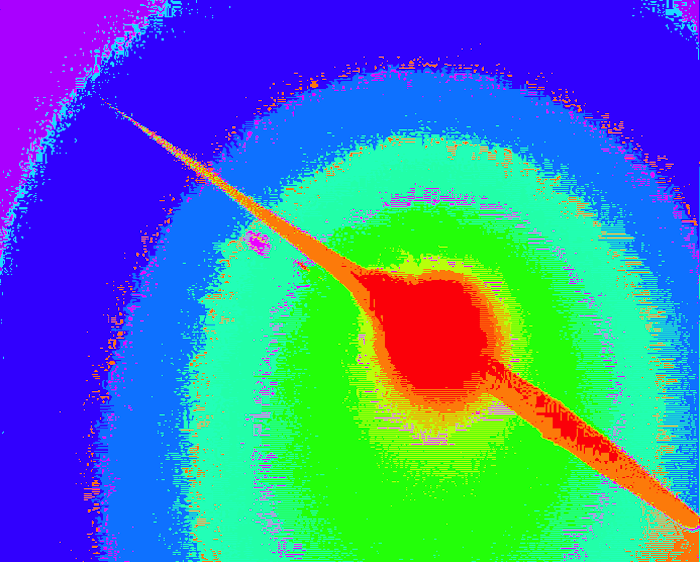
Composite still of the Clanfield N station data in false colors
Fireball spring season is in full swing and it is no wonder we are seeing more reports and observations of bright fireballs. This time it was the UK’s turn to enjoy a spectacular meteor event, which occurred in the early morning March 17, 2016 at 3:16:54 UT (i.e. GMT). The fireball meteor lit up the countryside for 4 seconds and was observed many bystanders.
Visual observations of the fireball (bolide)
This year St. Patrick’s Day began a rather unusual way; instead of delivering one of his numerous pots of gold, the leprechaun gave people some rare celestial theater – a bright fireball. Many casual observers in the UK, the Netherlands, France and Belgium saw a bright fireball meteor lasting nearly 4 seconds, illuminate the landscape and with a brightness that exceeded a full Moon. The IMO (International Meteor Organization) database of sightings (as of March 19, 2016) records 54 reports from visual observers from these countries. Most observers indicate a magnitude in the range of -10 to -20, but some estimated its brightness at -25 (that would make it comparable with the sun). Observant observers noted fragmentation of the body during the flight, and some of also report accompanying sonic effects. The palette of reported colours is quite varied, but predominant reports are of blue and green. Distribution of monitoring stations from reporting on IMO overview map shows the “density” reports of observers in each country.
.
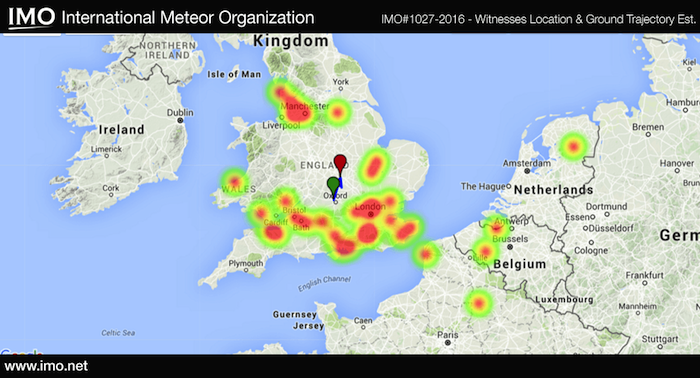
Report locations across the UK, the Netherlands, France and Belgium
Video Observations
Within the UKMON Network (United Kingdom Meteor Observation Network) the bolide was recorded directly by 5 stations (7 cameras). A camera at the NHM in London) recorded a series of flashes out of sight of the camera. A record bolide’s flight is therefore available from stations Clanfield (Steve Bosley, Hampshire Astronomy Group), Church Crookham (Peter Campbell-Burns), Lockyer (Dave Jones, SPAM Group 2 cameras), Scotch Street (Steve Hooks) and Wilcot (Richard Fleet, 2 cameras). Videos from all stations are provided below.
.
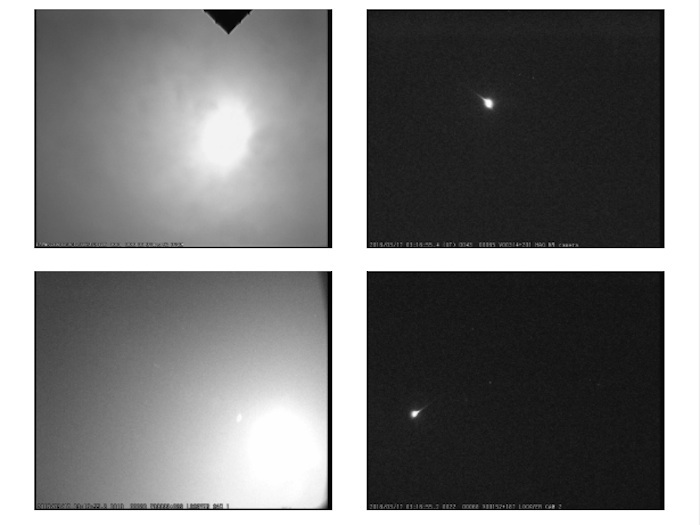
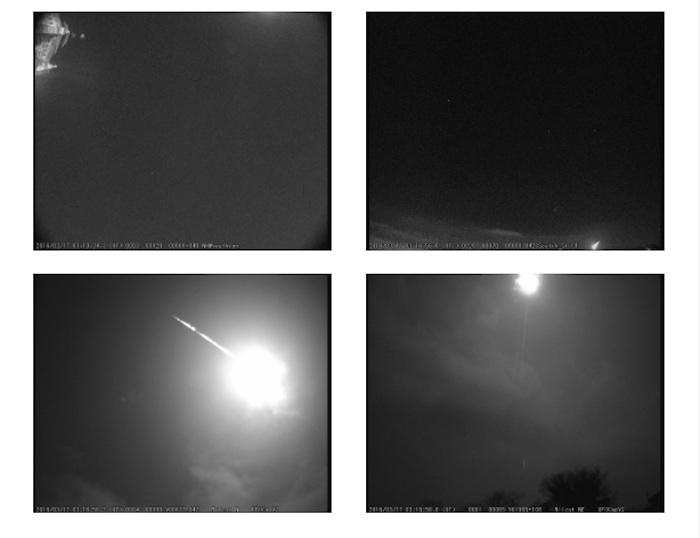
Our calculation of meteoroid’s path through the solar system used data from the initial phase of the bolide’s flight recorded by Norman Lockyer, Clanfield and Scotch Street stations. This procedure allows calculation of a track with a low value of deceleration, which at a height of 80-100 km affects significantly the final track at lower altitudes (between 30-50 km).
In this case, it was a relatively rapid meteor. Geocentric speed before entering the earth’s gravitational field was 43.5 km / s (including the effect of deceleration, Dv / Dt = -0.7 km / s-2). The orbital meteoroid path elements were as follows:
a = 3.01 AU (semi-major axis),
q = 0.048 AU (distance perihelia),
e = 0.984 (track eccentricity),
i = 18.3 ° (slope of the runway),
ω = 336, 7 ° (latitude argument perihelion)
Ω = 356.7 ° (longitude of the ascending node)
The bolide was a sporadic meteor (i.e. without affiliation to a known stream) with a geocentric Radiant RA = 205.4 °, DEC = -6.4 °. Projections of the meteoroid’s path through the solar system is shown below (taking into account of deceleration on the geocentric velocity VG.)
.
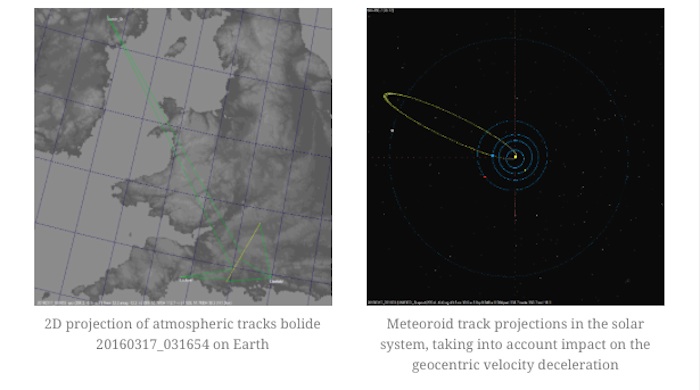
Due to the extent of the image saturation caused by the brightness of the bolide, to calculate the atmospheric path it was necessary to perform measurements on still images rather than video. All measurements were carried out using the AstroRecord software, and most suitable for this purpose was the Clanfield station videos which covered almost the whole length of the bolide’s flight (3.64 seconds).
The projection of the early atmospheric track was located at coordinates N50.761º W2.089º near the village of Lytchett Matravers (ENG), the height of the meteor at this time was 112.7km above the Earth’s surface. The end projection of atmospheric track was located at coordinates N51.768º W1.528º near the village Curbridge (ENG) and height of the meteor at this time was 38.3km above the Earth’s surface.
The highest absolute magnitude of the fireball measured from the Norman Lockyer station was -14.7, the absolute brightness of a unified path of the above stations was -13.6. The bolide traveled 141.3 km during the ablative phase of its flight through the Earth’s atmosphere having entered the atmosphere with a fairly low angle of 32.1 degrees.
Fragmentation first occurred at an altitude of 68.9 km at the speed of 43.2 km / s, and we estimate that the mechanical strength of the body was 0.16 + -0.02 MPa. Entry speed into the atmosphere was 44.8km / s and speed at its terminal altitude (38.3km) was 26.6km / s. During the ablative phase of its flight through the Earth’s atmosphere, its mass could be established using am empirical equation (Jacchia, 1969) and was estimated to be 66kg+ -16 kg. The meteoroid’s path through the solar system indicates it is of a cometary origin. Its progenitor was probably a comet of low perihelion value, for example, or one of the Kracht or Marsden group of comets.
This orbit is very atypical for what we normally see. Most fireballs and bolides come from orbit between Mars and Jupiter this time of year and we usually see much slower speeds when entering our atmosphere.
Conclusion
Considering origin of the meteoroid, terminal altitude and especially terminal velocity it’s practically impossible anything survived the entry or even fell on the ground as we saw lately with case in Germany on 6 March 2016.
.
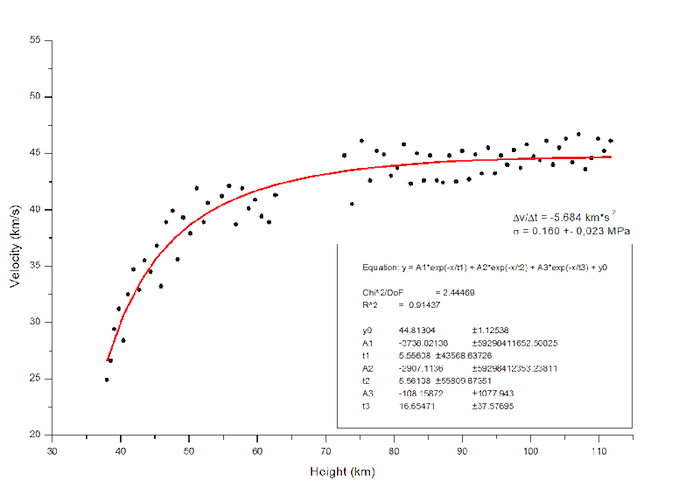
Bolide 20160317_031654 deceleration during ablation.
Cover image: Composite still of the Clanfield N station data in false colors.
Quelle: UK Meteor Network
4526 Views
